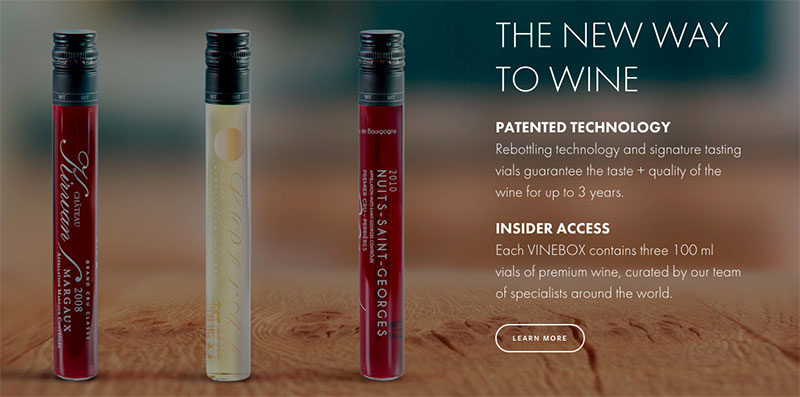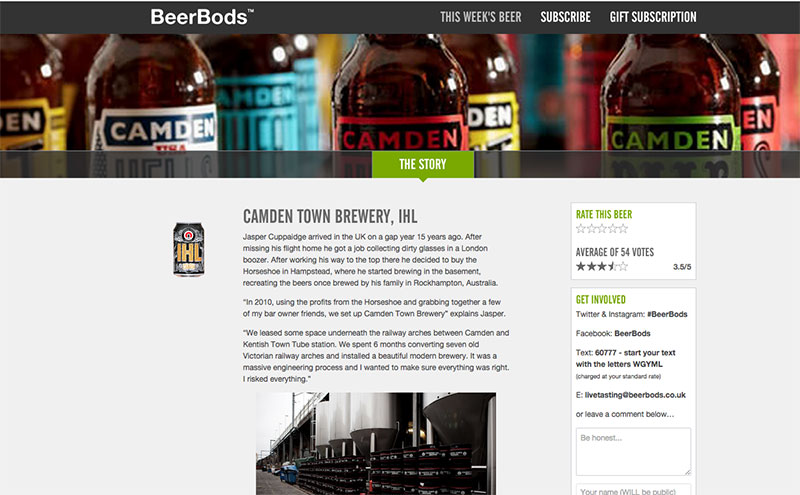Successful market makers blend innovation and reason. There has to be a reason behind why consumers change the way they act. Habits are difficult to break when there’s no reason to break them.
So when we put forward an idea. When we look to change how people consume, we associate that change with a reason to change.
The success of a subscription business model is dependent upon buying habits. The questions that your consumer will ask:
- Do I buy on a regular enough basis to justify subscribing?
- Is there an inconvenience buying this product regularly?
- Is there a value beyond delivery to subscribing to receive this product?
Think back. The milk delivery. We knew the rate at which we consumed therefore we could safely predict and order the supply dependent on our needs. Now, milk has a longer shelf life. We now have easier access to buy milk from our local shop, the superstore or the petrol forecourt. The need to have milk delivered to our doorstep is no longer there.
We continue to subscribe to magazines and newspapers. We can also subscribe to receive pet food, nappies, movies, online software. The list of products available through subscription continues to grow as we weight up the convenience of subscribing against the traditional routes of purchase.
The business model of mass disruption
Then we have the innovators. The disruptors. The digital businesses offering an alternative to how we typically consume. Birchbox is a great example allowing you to sample beauty products each month. Like what you sample? you buy a larger volume of the product.
Brands are forcing us to rethink how we buy and consume. They’re offering us the opportunity to sample before we commit to the larger investment.
My question is this: when you consider a subscription-based business model are you selling more than just convenience? Are you innovating for the sake of innovation?
Wine by the vial
Here’s a smart idea. Wine tasting, but in the convenience of your home. US startup Vinebox have introduced a subscription service where subscribers receive 3 exclusive wines each and every month. Not by the bottle, by the 100ml vial.

They’re devised a smart rebottling process that retains the quality of the wine as it’s transferred into small vials readied for delivery. For the consumer, this allows you to sample exclusive, more expensive, wines without the outlay on a full bottle of ‘so so’ wine. The concept is brilliant. Being introduced to new wines that we may not access on the shelf of our local wine merchant or superstore.
It’s a very similar model to that offered by UK real ale suppliers Beerbods. Beerbods deliver subscribers a crate of 12 bottles every 3 months of beers sourced from small breweries up and down the UK. The beers we love? We can then order in greater volume. Again, that opportunity to sample from home and shop for the products we prefer.

Both Beerbods and Vinebox cater to the enthusiast rather than the guzzler.
The Beerbods proposition is to allow us to ‘Drink Better Beer’
Vinebox invite us to ‘Discover Fine Wines By The Glass’.
The emphasis is on ‘difference’. Making quality more accessible courtesy of fellow enthusiasts (the retailer) doing the work on our (the audience) behalf.
Thinking beyond the product
Beerbods are doing something different. They’re inviting us to sample the product and the story. They’re leveraging the story behind the product to sell the product.
As David Christopher shared in the tweet below, the way a product tastes and how we believe a product tastes (that’s the brand element) can be totally different.
Our perception of how different beers taste based on their branding vs. how different they actually taste. pic.twitter.com/iDibpGADkM
— David Christopher (@davidmchris) September 22, 2015
That’s the beauty of branding. We even believe wine tastes better when served in a $20 glass compared with a $1 glass. It’s not the case. Blind taste tests provide that it’s all about perception.
Innovation – the emotive connection?
No matter how innovative a product or service may be, it still requires an emotive connection with the customer. Put another away, there needs to be a reason why we’re prompted to take action. To subscribe to the product you’re offering.
With Vinebox my initial reaction was ‘that’s smart, I like the idea’. All the investment in technology to allow the 100ml to be dispatched ‘straight from the barrel’ doesn’t make up for the missing connection.
The connection is built upon intrigue and curiosity. With Beerbods I know the founder’s own story. The story behind the business. I know the amount of time invested in choosing the right beers to dispatch to their subscribers. It’s well documented throughout the site. It’s a vital element of the brand. They’re not just selling beer. Beerbods are on the hunt for better beer (on my behalf).
Vinebox is different. There’s no indication of the hunt. I’m aware Vinebox hasn’t fully launched yet. I still feel there’s an opportunity to sell something beyond convenience and ‘product’. I hope they do.
When you share your backstory there are two elements. The formulation of the idea and the delivery of the process. The ‘lightbulb moment’ and the ‘mission’. Too often we focus on the lightbulb moment because that’s, as business founders, what excites us. It’s the story we want to retell. The ‘hey! Let’s create a business out of this!’ moment.
For us, the consumers, it’s the process of idea to actuality that creates the intrigue. That’s the element of the story that brings the moment into our own context. There are 1000’s of ideas out there. Very few are actioned. How does this impact me?
- why were those particular wines chosen?
- how were those particular wines discovered?
- why should I care?
At present, the Vinebox proposition is based on the selection process. Here’s 3 wines for you to sample. Contrast this with Beerbods who we know have sought out the best beers for our mini taste session. They’re sourcing on our behalf.
Story matters
As marketers talk far far too much about ‘story’. The conversation regarding story demands context. For the subscription-based business that context is the reason why the products have been chosen as much as the products themselves.
Vinebox has all the makings of a great service. It’s early days. I’m sure we will see story incorporated into the heart of the service.
When we look to change the way our consumer buys, or considers buying, we need to emphasise something far more emotive than the mechanism itself.
Research indicates we are heavily influenced by factors other than those we really should care about, such as quality and superior taste. – Money Magazine
As either makers or retailers, whether conventional shippers or subscription-models, your role is to sell the story.
Let people buy into your product and they’re far more likely to buy your product.
Innovation demands reason.
